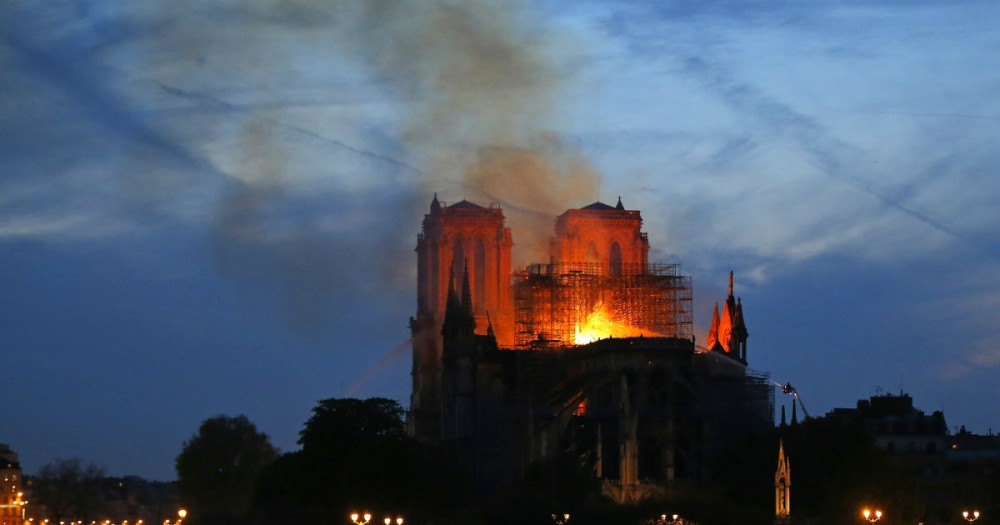After the catastrophic fire at Notre Dame, what might rebuilding look like?
The 12th-century cathedral was already beginning to crumble.

Pledges to rebuild followed quickly after the 856-year-old Notre Dame Cathedral in Paris was engulfed in flames yesterday, destroying most of its roof and the entire wooden frame in the interior.
Its landmark rectangular towers withstood the flames, as did its rose-shaped stained-glass windows, along with some of its relics and works of art. A firefighter and two police officers were injured, according to news reports.
The fire alarm went off at about 6:30 p.m. As several hundred firefighters fought the flames, people on the street stood weeping at the sight—gasping when the spire collapsed—and gathered after sunset to sing the Ave Maria in French.




